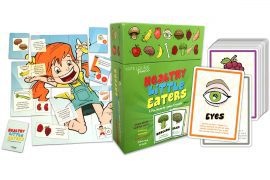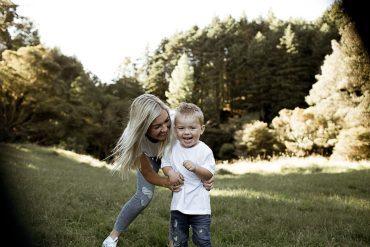By Zoe Taylor and Carly Nowell
We all want our children to grow up being wonderful eaters. Having a child who chomps happily through all the protein and vegetables on their dinner plate, is excited to try new foods and always asks for more is most parents’ dream. And while there are a few of these unicorn children around (we all know one), most children have a much bumpier path to food acceptance.
Unfortunately, there’s no ‘magic bullet’ to transform your little ones into little foodies overnight or help them move through their fussy eating stage. But there are some simple tips you can implement which can help set them up to become more adventurous eaters as they grow.
And remember, while most information about setting up your children’s eating habits focuses on the first year or two of life, your child’s ‘food journey’ doesn’t stop at 1. Or 2. Or even 5. Most children continue to explore and develop their relationship with food well into their teenage and even adult years. So if your journey starts a little bumpier than you’d like… don’t worry, you haven’t missed the boat. Working to support and build curiosity and engagement with all different types of food is always worthwhile, regardless of age.
Note: the ideas provided in this blog are longer term, preventive strategies aimed at children 0-5 years. If you’re currently dealing with food refusal and seeking more instant support, check out our ‘Fussy Eating Blog’.
Our six tips to encourage adventurous eating (and help prevent fussy eating):
Make food a focus of play- and story-time
Talking positivity about food during playtime and story time can help little ones be more open to trying new foods. Borrowing food-focused books from the library is a simple way to share positive messages about food. We love Lunch at 10 Pomegranate Street, but there are plenty of wonderful options to choose from.
Little ones love pretend cooking, from mud-pies to pretend food cafes and tanbark-shopping in the playground. When engaging in pretend play, make the discussion around foods you’d like them to explore more (i.e. veggies). It doesn’t need to be fancy or detailed, simply talking about make-believe food can help. E.g. “I’m making a yummy sandwich with tomato, cheese, cucumber and lettuce. Mmm this lettuce is so crunchy! What are you making?”.

Get your hands dirty
Encouraging your little ones to get their hands dirty in the garden is a fun way to nurture their curiosity about food. You don’t need to commit to an entire veggie patch – even growing a few hardy herbs in pots can be a great start. You also don’t need a beautiful terracotta plant pot to get started. An old yoghurt or ice cream tub works just fine. Just (carefully!) put a few holes in the bottom, fill with soil, and you’ve got yourself a pot.
Tip: Mint, oregano and rosemary are practically indestructible, so a great option if you don’t have a green thumb! Other fun ideas, which are perfect for small spaces and small humans, are strawberries, cherry tomatoes or baby carrots.
Toddlers and older children will enjoy preparing the soil, planting seeds, and taking care of the plants. Watching those plants sprout and grow is like watching magic happen for little eyes. And the best part? They’re often more inclined to give the harvest a taste-test!











